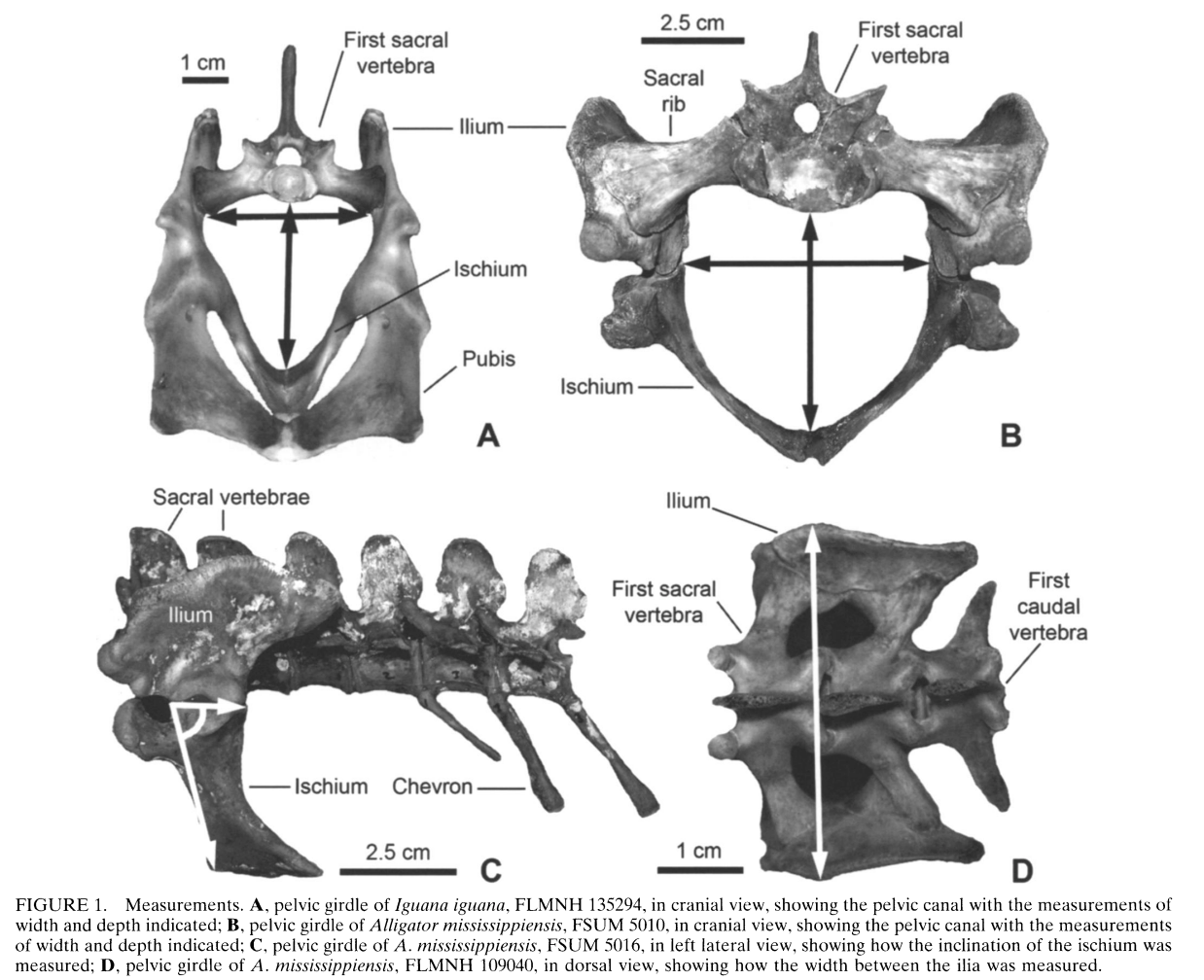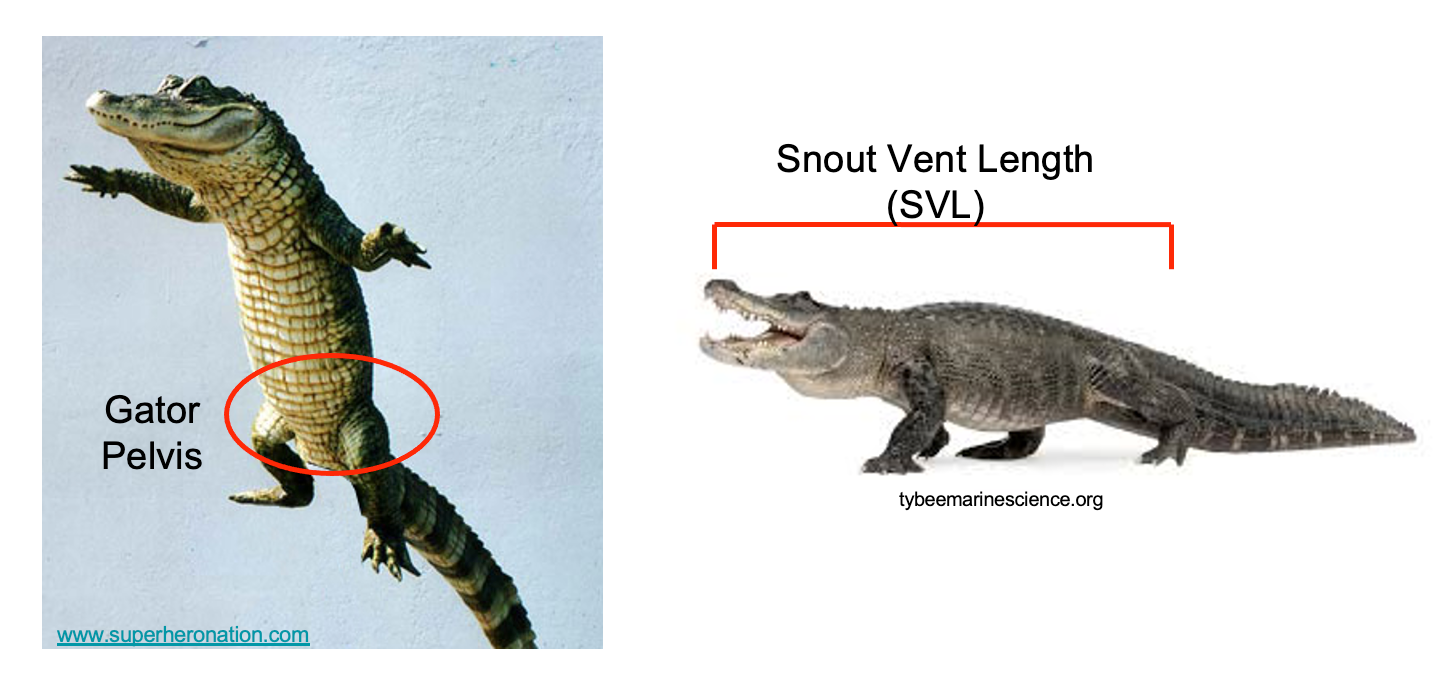Activity: Gators

–>
Paleontologists are interested in identifying dinosaur sex through their fossil remains. In an effort to explore this, Prieto-Marquez, Gignac, and Joshi (2007) compared various traits believed to differentiate sexes in alligators (Alligator mississippiensis), which are close relatives to dinosaurs. One of the characters was pelvic canal width, which they suspect differed between alligator sexes, but may also differ with body length (a common metric used for alligator body length is the length from the alligator snout to its vent).
Objective: assess if pelvic canal widths differ between male and female alligators, while controlling for the alligator’s snout vent length. Use these results to discuss whether pelvic canal width, or similar diagnostic measures, may be useful for determining alligator sex, and whether similar diagnostics may apply for dinosaurs.

Steps:
- import the data from https://raw.githubusercontent.com/laurenkolinger/MES503data/main/week12/gator.csv
- look at the first few rows of the data (
head) and describe it
“in this dataset, each row represents…”
- Answer some basic questions about the ANCOVA, referring to the above context.
What are the independent, dependent, and covariate variables?
What are the statistical null and alternative hypotheses for the main effects of the ANCOVA ?
- Make a boxplot of the main effects of the data
does it look like there is a difference in PelvicCanalWidth between Sexes? which sex has greater PelvicCanalWidth?
- Make a scatterplot of the data with the covariate and regression line.
does it look like there is an effect of SnoutVentLength on PelvicCanalWidth? Describe the trend for either sex, if any.
Does it look like the covariate (snout vent length) affects each of the levels of the main effect the same? NOTE: remember, this is one of our assumptions of the ANCOVA
- Test assumptions
Assumption 1: Independent/Random Samples
- Assuming this assumption is met, describe why in 1-2 sentences. Review statistical independence here
Assumption 2: Equal Variance
- Test the assumption of equal variance, include a statistical test and a plot. What are the results and what does this mean? Report p values from the statistical test and describe the trend you observe in the plot
Assumption 3: Normal Distribution
- Test the assumption of normality, include a statistical test and a plot. What are the results and what does this mean? Report p values from the statistical test and describe the trend you observe in the plot
Assumption 4: Homogeneity of Regression slopes
- test for a significant interaction, report your findings and their meaning for the ANCOVA.
- Explore model fits.
run a regular one-way ANOVA, and extract the R^2 and RSE values
run the ANCOVA model, and extract the R^2 and RSE values
Which model is a better fit of the data? Describe why and report specific variables to back up your claim.
- Look at the results and discuss.
answer the following questions:
What does the coefficient for sex in the ANCOVA output tell us about the pelvic canal width in male alligators compared to females when body size is taken into consideration? Report p-values and estimates, and the directional trends. Use proper in-text reporting format.
Discuss the implications of this finding in the context of the study’s objectives of using pelvic canal width to predict alligator sex while controlling for alligator length.
Discuss whether you think pelvic canal width (or analogous metric because I honestly dont know if dinosaurs had pelvises) could be a helpful diagnostic for DINOSAUR sex (the ultimate objective of this study). Suggest any additional information or analysis might be needed to improve sex determination in dinosaurs.
